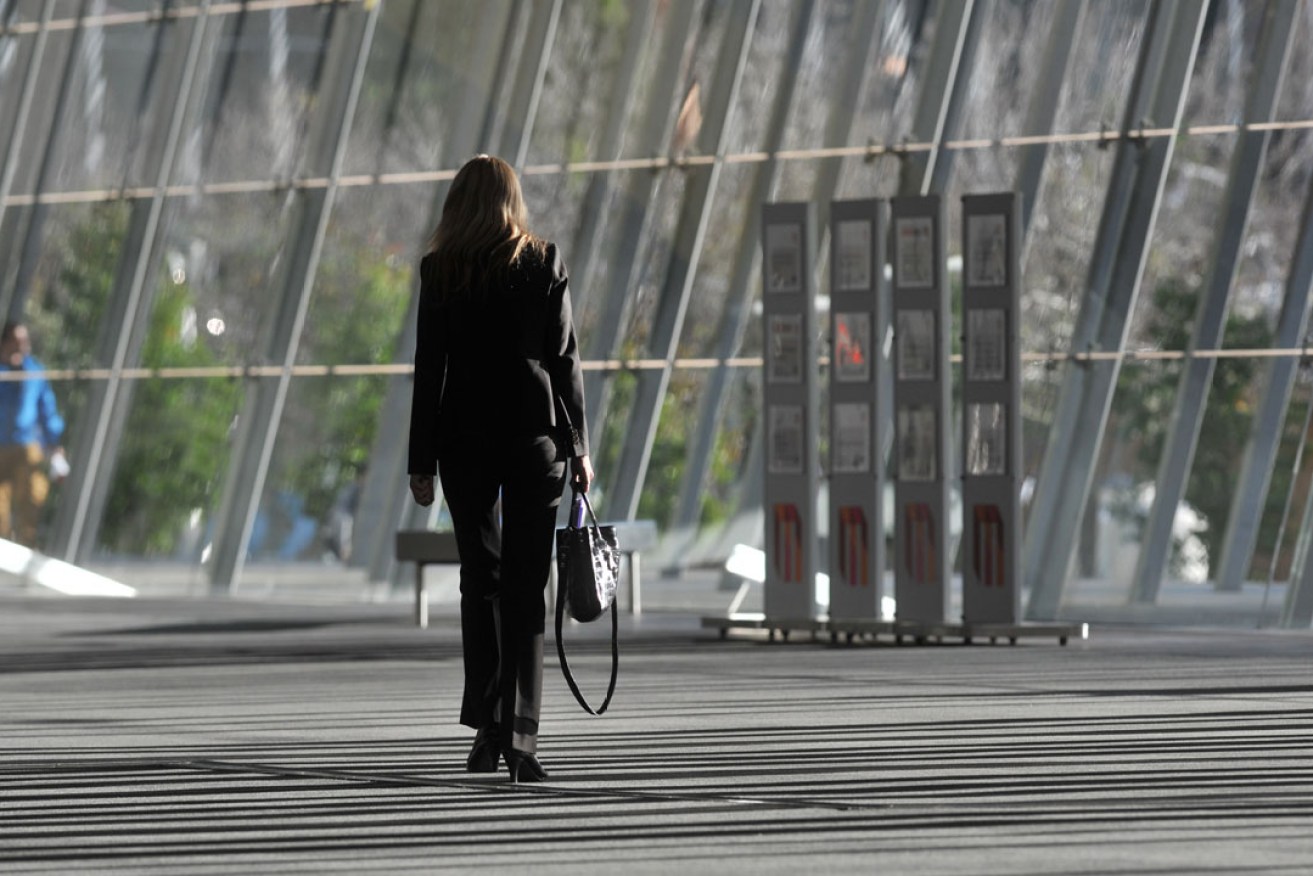The future of work is female
There’s no place for glass ceilings in the post-industrial world, writes Malcolm King. If businesses hope to reinvigorate our stagnant economy, they must employ women in positions of power.

The locomotive force of new technology, demographics and female educational achievement means the future of work will be female. Photo: AAP
You don’t need to be a weatherman to know that the winds of change are swinging around to the economic and political empowerment of women.
There is still a long way to go, as we have only 18 sitting female politicians in our state parliament out of a total of 69 members. Women still earn 16.2 per cent less than men (ABS, May 2016) and none of Australia’s 20 largest companies has a female chief executive.
As the headwinds of the global financial crisis still blow and states such as South Australia face massive unemployment and under-employment, the time has come to implement the third great economic and social reform since floating of the dollar and the deregulation of the economy in the 1980s.
Corporations currently run by men must smash the glass ceiling, allowing women to rise on merit to positions of political and institutional power, and to reinvigorate organisational and national productivity.
The locomotive force of new technology, demographics and female educational achievement means the future of work will be female.
Nationally, the female workforce participation rate is 59.3 per cent, up from 43.4 per cent in 1979. The male workforce participation rate is 70.4 per cent and falling. It was 78.4 per cent in 1979 (Labour Force, 2016).
Around 90 per cent of women aged 20-24 have Year 12 qualifications or above compared to 86 per cent of men in the same age bracket. Almost 40 per cent of women in the 25-29 age cohort have a degree, compared to 30.4 of men, according to the ABS Gender Indicators (Feb 2016). Around 45,000 more women than men completed post-secondary qualifications in 2014.
This revolutionary social change must be accompanied by handing women real organisational power. This is not a diversity issue. It’s not about quotas. It is about changing the consciousness of how business is conducted in Australia.
Whether us blokes like it or not, over the next 10 years, many career-minded women will climb out of the working class in to the middle class and women in the middle class will change the way workplaces and families are run.
This will include a massive overhaul of how childcare is funded to allow male partners to be paid to raise children at home while the woman works. As the economy changes, men will learn that parenting isn’t women’s work, but human work.
Since prehistoric times, women were cast as nurturers while men were warriors and hunters. The rise of highly trained, intelligent and adaptable women has transcended the “Me Tarzan, You Jane” stereotype.
Men who feel threatened by women will always simper and regress
The post-industrial economy is indifferent to men’s size and strength. The attributes that are most valuable today – social intelligence, open communication and the ability to negotiate – are not predominantly male. For example, women in poor parts of India are learning English faster than men to meet the demands of new global call centres. This is not equity. This is technology driving historical change.
I am not suggesting that men will become neutered poodles cowering in corners because they have a woman CEO. Men who feel threatened by women will always simper and regress.
To confront the current wicked and paradoxical challenges in our economy, we need men and women to topple organisational hierarchies built on gender and to form partnerships born from cooperation and capability. It’s bold. It’s daring and it’s the future.
The South Australian case is instructive. According to the ABS (July 2016), about 429,900 males are in work. That’s about the same figure as back in November 2008. Male jobs have disappeared, primarily in manufacturing, construction and mid-level administration roles. Technology and offshoring have blown them away.
It’s a different story with women. There are 383,300 working women in SA and that figure is climbing. Back in November 2008 there were 358,300 working women. That’s an extra 25,000 jobs but, admittedly, most of those jobs were part time or casual. Nonetheless, it’s women who are getting work.
One of the reasons the state lacks a reforming spirit is the dead hand of a plutocracy of men who run SA-based companies (some for many years) and who drink deep from state government grants. While women might run the HR or marketing department, few have a say on the strategic direction of the company. The last thing these men want is internal or external competition.
The public service is worse. Women with postgraduate degrees – some with international experience – sit for years in the mid-level echelons as they watch blokes who know other blokes get promoted above them. Their ideas are pirated by their department heads and presented as their own.
Young women are inculcated and indoctrinated into an essentially male culture of “this is the way we do things around here”. Which is to say, “don’t rock the boat”.
This closed-system thinking has driven thousands of young women over the last 30 years, direct from the graduation halls of our universities, into the arms of corporations in Melbourne, Sydney, London and New York.
If South Australia is to have any hope of trading out of the diabolical economic straits it is in now, it must employ women to positions of power and authority and inject life into a regressive and stagnant economy.
Malcolm King, an Adelaide writer, works in generational change and is a regular InDaily columnist.




